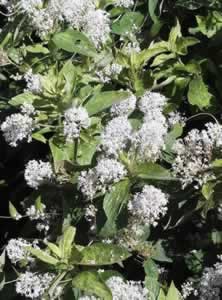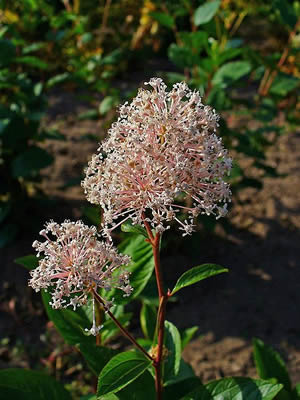Red Root Ceanothus americanus
- Common Names
- Red Root , New Jersey tea, Wild Snowball
- Botanical Name
- Ceanothus americanus
- Family
- RHAMNACEAE
Medicinal Uses & Benefits of Red Root
![]() How to Use|
Side Effects |
Plant & Garden|
How to Use|
Side Effects |
Plant & Garden|
- Medicinal Uses: * Cough
* Dental/Oral Care
* Sore Throat
- Properties: * Astringent * Expectorant * Styptic
- Parts Used: inner root bark, leaves
- Constituents: ceanothine, tannins.
How to Use: Red Root
The healing uses of the plant were known to the native tribes of North America who used it to treat skin cancers, skin lesions, and venereal sores. The root is an astringent, expectorant and antispasmodic. It is used by modern herbalists in the treatment of complaints such as asthma, bronchitis, and coughs. It has proven useful in mouthwashes to relieve sore throat and to help reduce dental plaque. 1
Preparation Methods & Dosage :Decoctions of the root bark, tinctures and sometimes found in capsule form
Red Root Side Effects: Not for use while pregnant or nursing.
Plant Description
- Flowers/Fruit/Seeds: Cylindrical clusters (1-2" long) of tiny, fragrant, white flowers (1/8") appear on long stalks at the stem ends or upper leaf axils
- Plant Class:compact, dense, rounded shrub which typically grows 2-3' tall
- Root and Bark: Initially green and later developing shallow splits and turning brown.
- Leaves:Toothed, broad-ovate, medium to dark green leaves (to 4" long) are gray and hairy below.
- Preferred Habitat:prairies, glades, dry open woods and thickets
- Flowering Season:Spring to Late Summer
- Distribution:
Regional Traditions :North America *














